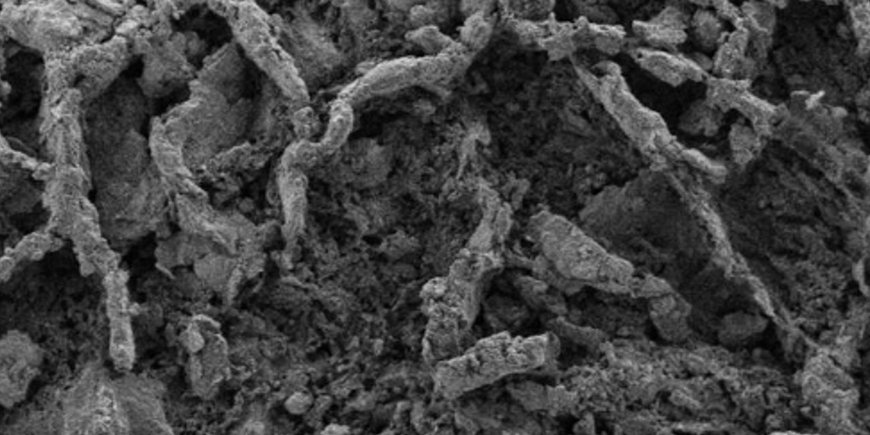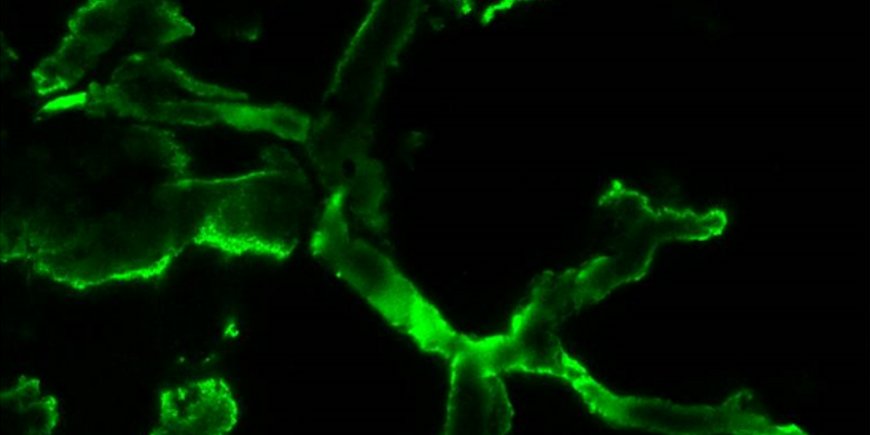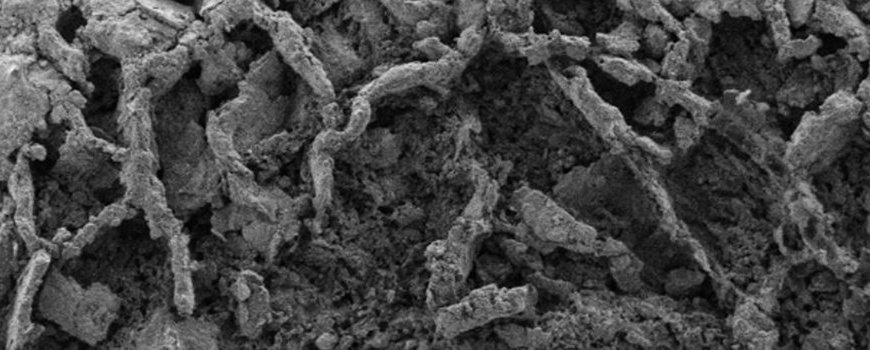The first mushrooms were present 300 million years earlier than believed until now, shows a new study of which GFZ was part
According to a new study, the first mushrooms were already present on Earth between 715 and 810 million years ago, 300 million years earlier than the scientific community had believed until now. The results, published in Science Advances, also suggest that mushrooms could have been important partners for the first plants that colonized the continental surface.
The origin and evolution of the kingdom Fungi – more commonly known as mushrooms – are still very mysterious. Only two percent of species in this kingdom have been identified, and their delicate nature means fossils are extremely rare and difficult to tell apart from other microorganisms. Until now, the oldest confirmed mushroom fossil was 460 million years old.
A group of researchers led by Steeve Bonneville, from the “Biogeochemistry and Earth system modelling” research unit at the Université libre de Bruxelles, has discovered a new mushroom fossil – the oldest to ever be identified from its molecular composition. The study was conducted with help from several groups at ULB (Centre for Microscopy and Molecular Imaging and 4MAT), in close collaboration with Liane Benning from the German Research Centre for Geoscience (GFZ Potsdam) and the Freie Universität Berlin and with support from other institutions, including the Diamond Light Source synchrotron in UK and the Carnegie Institution for Science in Washington, USA.
The fossilized remains of mycelium, a network of interconnected microscopic strands, were discovered in rocks whose age is between 715 and 810 million years – a time in Earth’s history when life on the continents’ surface was in its very infancy. These ancient rocks, found in the Democratic Republic of the Congo and part of the collection of the Africa Museum on Tervuren, formed in a lagoon or coastal lake environment. “The presence of fungi in this transitional area between water and land leads us to believe that these microscopic mushrooms were important partners of the first plants that colonized the Earth’s surface around 500 million years ago”, explains Steeve Bonneville.
Previous mushroom fossils had been identified only based on the morphology of organic remains extracted from rocks using corrosive acid compounds. “This method damages the chemistry of organic fossils and only allows morphological analysis, which can lead to incorrect interpretations because certain morphological characteristics are common to different branches of living organisms”, Steeve Bonneville says.
This is why the authors of this new study used multiple molecular analysis techniques at a microscopic scale: synchrotron radiation spectroscopy (XANES, µFTIR), µ-Raman confocal microscopy, fluorescence microscopy (CLSM) and electron microscopy (FIB-TEM-HAADF). Using these techniques, it was possible to study the chemistry of organic remains in situ, without chemical treatment. This enabled the researchers to detect traces of chitin, a very tough compound found in the cell walls of fungi. They also demonstrated that the organisms were eukaryotes, i.e. their cells had a nucleus. “Only by cross-correlating chemical and micro-spectroscopic analyses could we demonstrate that the structures found in the old rock are indeed about 800-million-year-old fungal remains”, says Liane Benning from GFZ Potsdam.
“This is a major discovery, and one that prompts us to reconsider our timeline of the evolution of organisms on Earth”, says Steeve Bonneville. “The next step will be to look further back in time, in even more ancient rocks, for evidence of those microorganisms that are truly at the origins of the animal kingdom.”
Original study:
Bonneville, S., Delpomdor, F., Préat, A. et al., 2020. Molecular identification of fungi microfossils in a Neoproterozoic shale rock. Science Advances. DOI: 10.1126/sciadv.aax7599
doi.org/10.1126/sciadv.aax7599
Images:
An image of a piece of fossilized mycelium obtained by scanning electron microscopy (Bonneville et al. 2020: Molecular identification of fungi microfossils in a Neoproterozoic shale rock. Science Advances. DOI: 10.1126/sciadv.aax7599. This work is licensed under CC BY-NC. advances.sciencemag.org/).
Link:
https://media.gfz-potsdam.de/gfz/wv/pm/20/11255a_Mycelium.jpg
Fluorescence labelling of the chitin in a fossilized mycelium; image obtained by confocal laser scanning microscopy, scale bar 10 µm (Bonneville et al. 2020: Molecular identification of fungi microfossils in a Neoproterozoic shale rock. Science Advances. DOI: 10.1126/sciadv.aax7599. This work is licensed under CC BY-NC. http://advances.sciencemag.org/).
Link:
https://media.gfz-potsdam.de/gfz/wv/pm/20/11255b_Mycelium-chitin.jpg
Scientific contact:
Prof. Liane Benning
Section Head Interface Geochemistry
Helmholtz Centre Potsdam
GFZ German Research Centre for Geosciences
phone: +49 331 288- 28970
e-mail: liane.g.benning@gfz-potsdam.de
Media contact:
Dipl.-Phys. Philipp Hummel
Public and Media Relations
Helmholtz Centre Potsdam
GFZ German Research Centre for Geosciences
Telegrafenberg
14473 Potsdam
phone: +49 331 288-1049
e-mail: philipp.hummel@gfz-potsdam.de
Twitter: @GFZ_Potsdam





![[Translate to English:] Gruppenbild mit 4 Personen](/fileadmin/_processed_/8/d/csm_20241017_GFZ-Emmerman-Medal-005_web_reinhardtundsommer_21a414fa4a.jpeg)






![[Translate to English:] Ice landscape with five red tents](/fileadmin/_processed_/8/9/csm_Zeltlager_auf_dem_Eis_Urheberin_Jenine_McCutcheon_5ced2d523b.jpeg)














![[Translate to English:] Group photo with 7 people in front of a new metal plant in a large laboratory hall.](/fileadmin/_processed_/0/4/csm_20240628-GFZ_Einweihung_Triax-Anlage-PRESSE_Abb1_040_c-Bahlo-GFZ_187906cb48.jpeg)




![[Translate to English:] Heidi Kreibich, woman with short brown hair and blue eyes. She is wearing a grey cardigan and a red polo shirt](/fileadmin/_processed_/6/6/csm_kreibich-Heidi_1_Querformat_he-2021_2dedd3ef33.jpeg)

